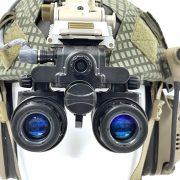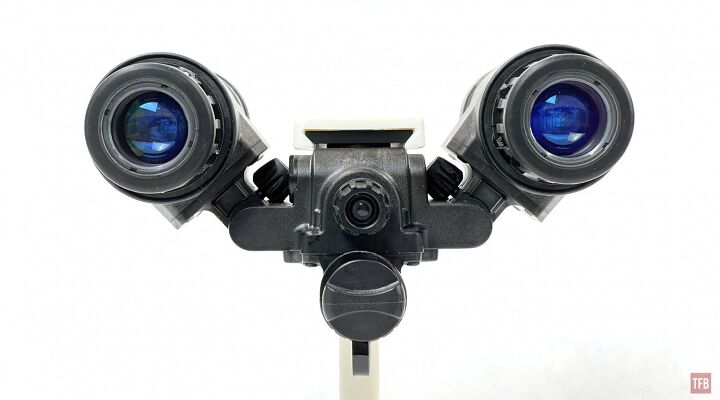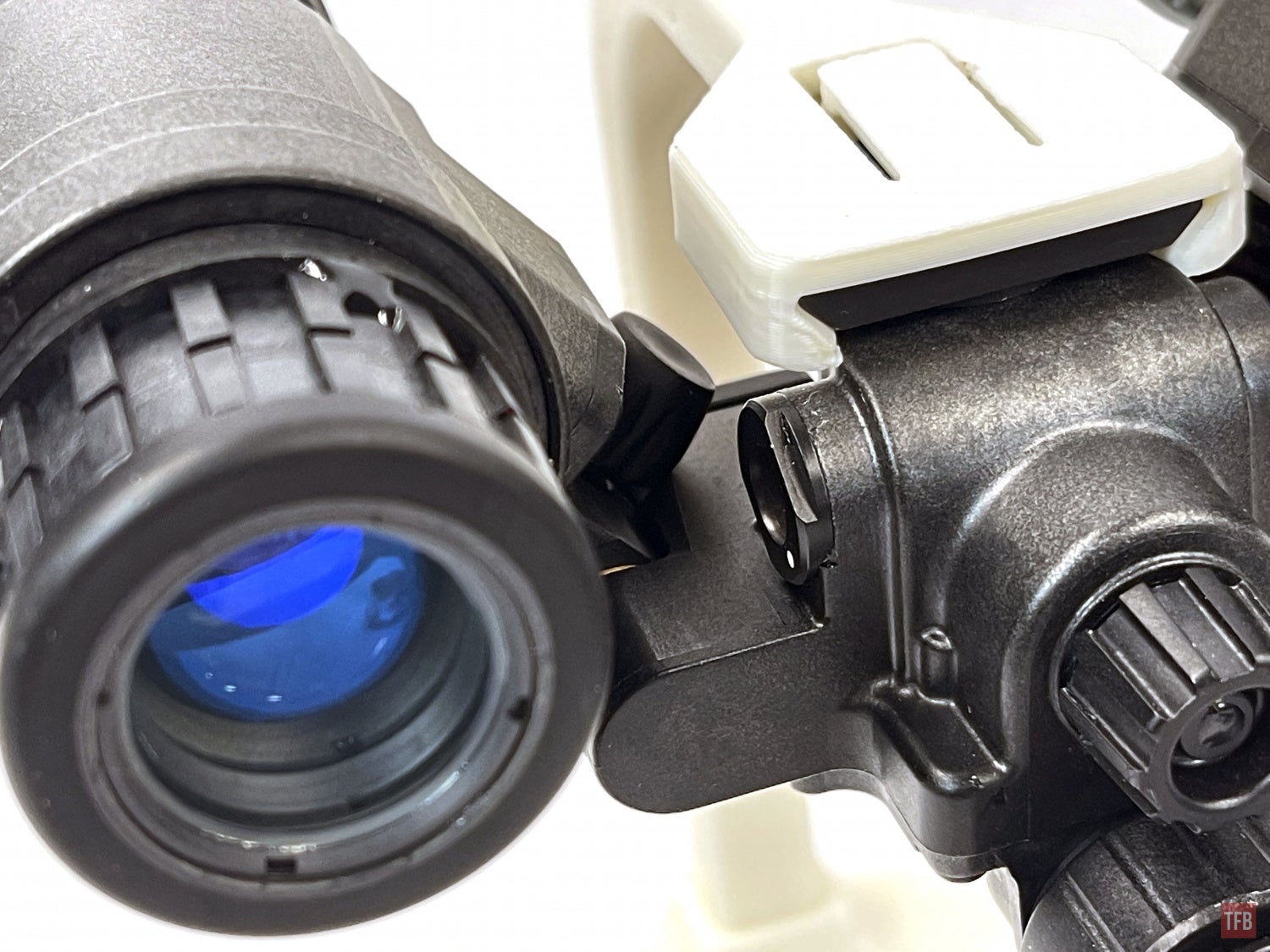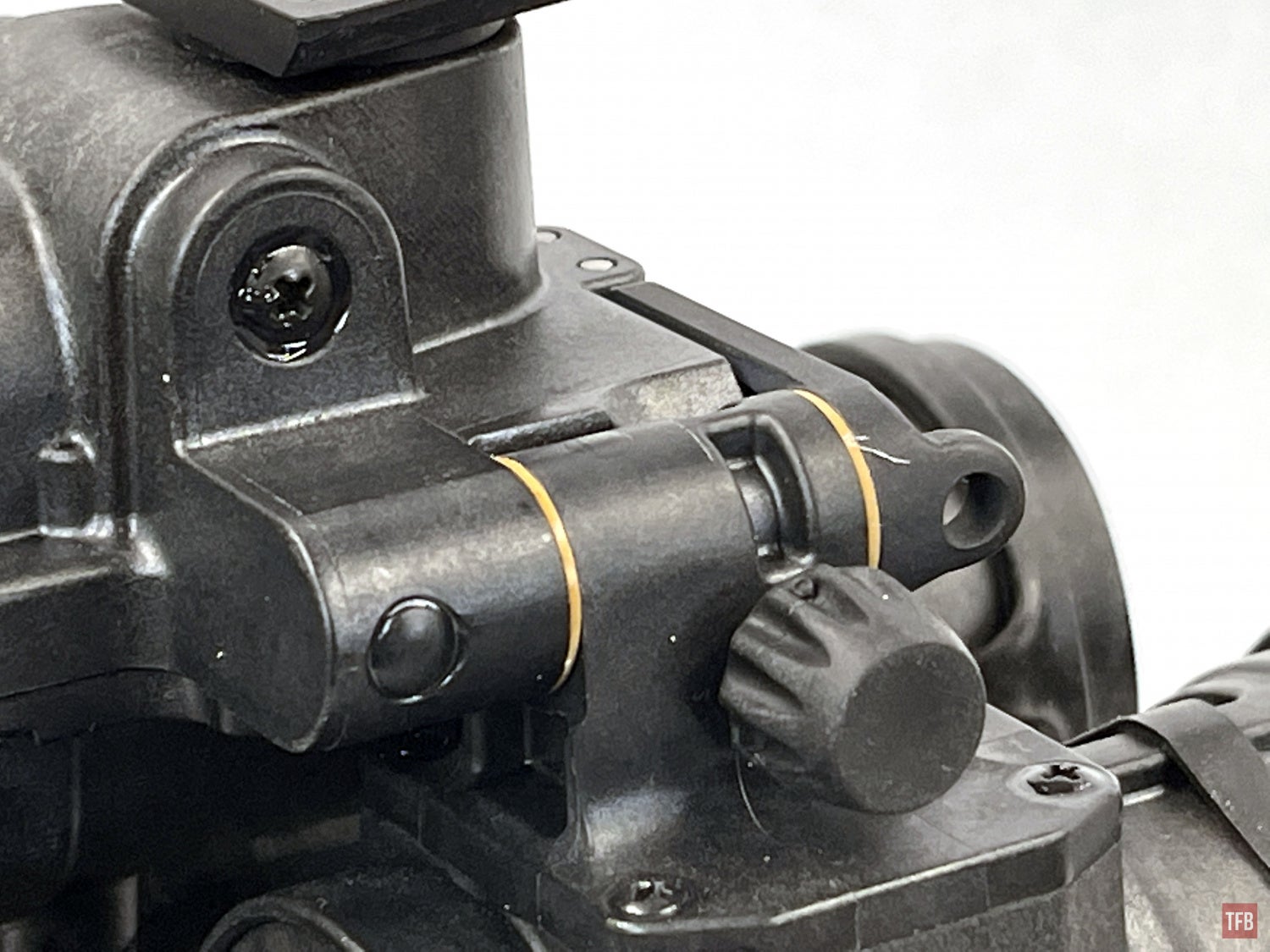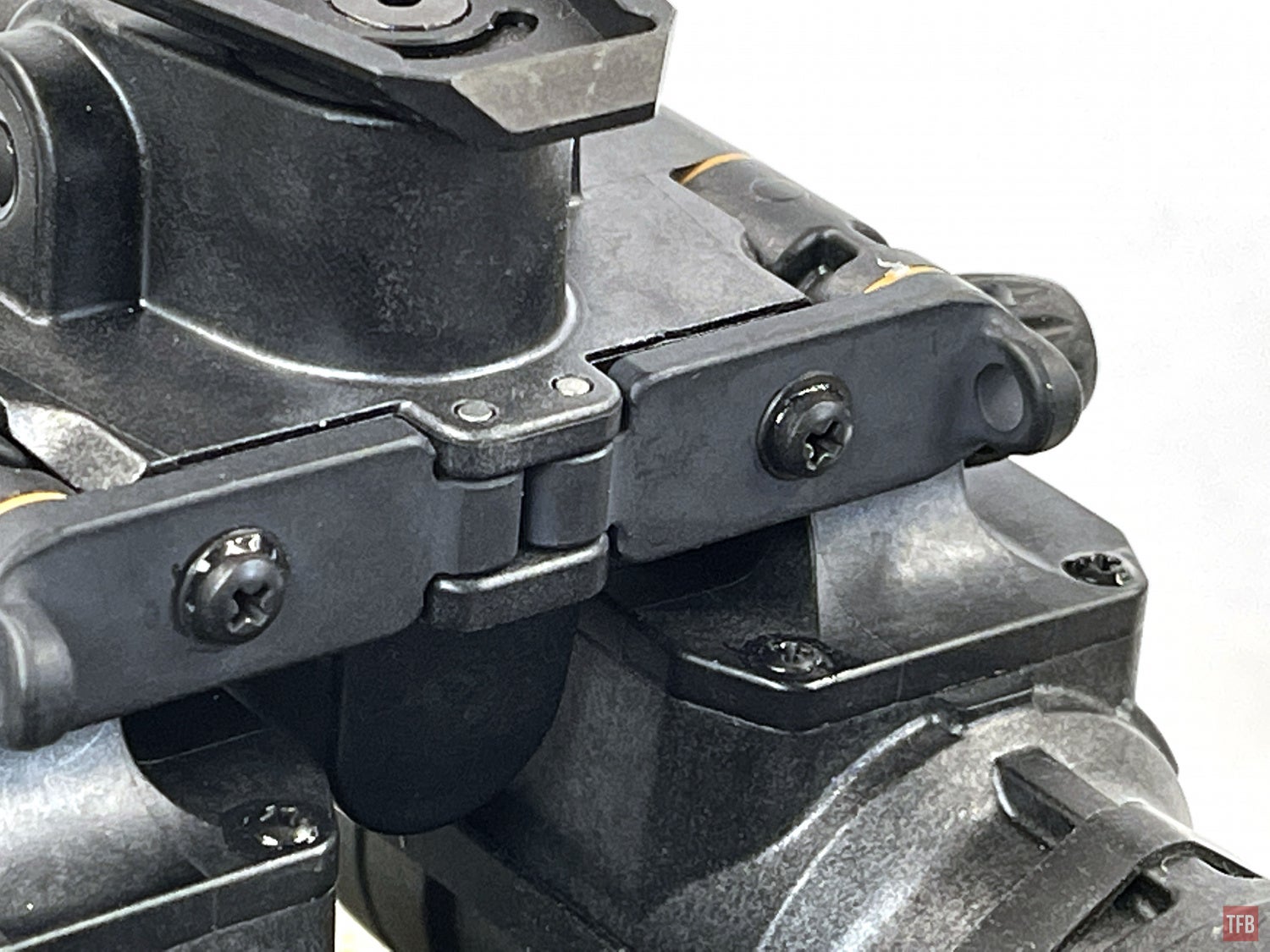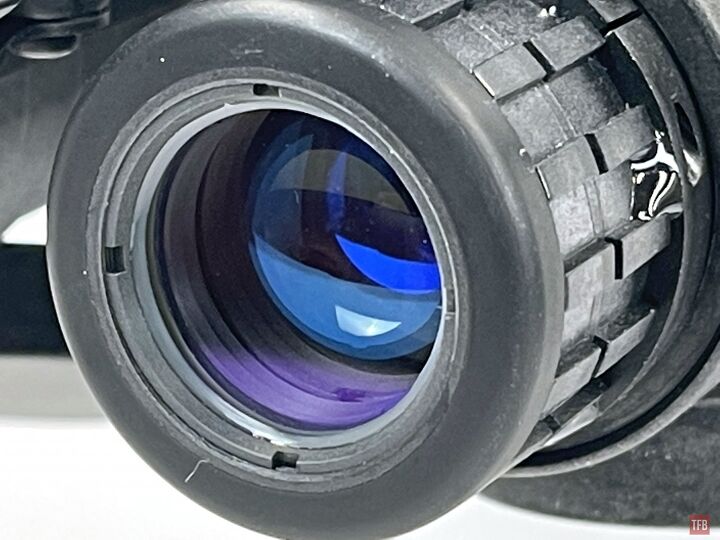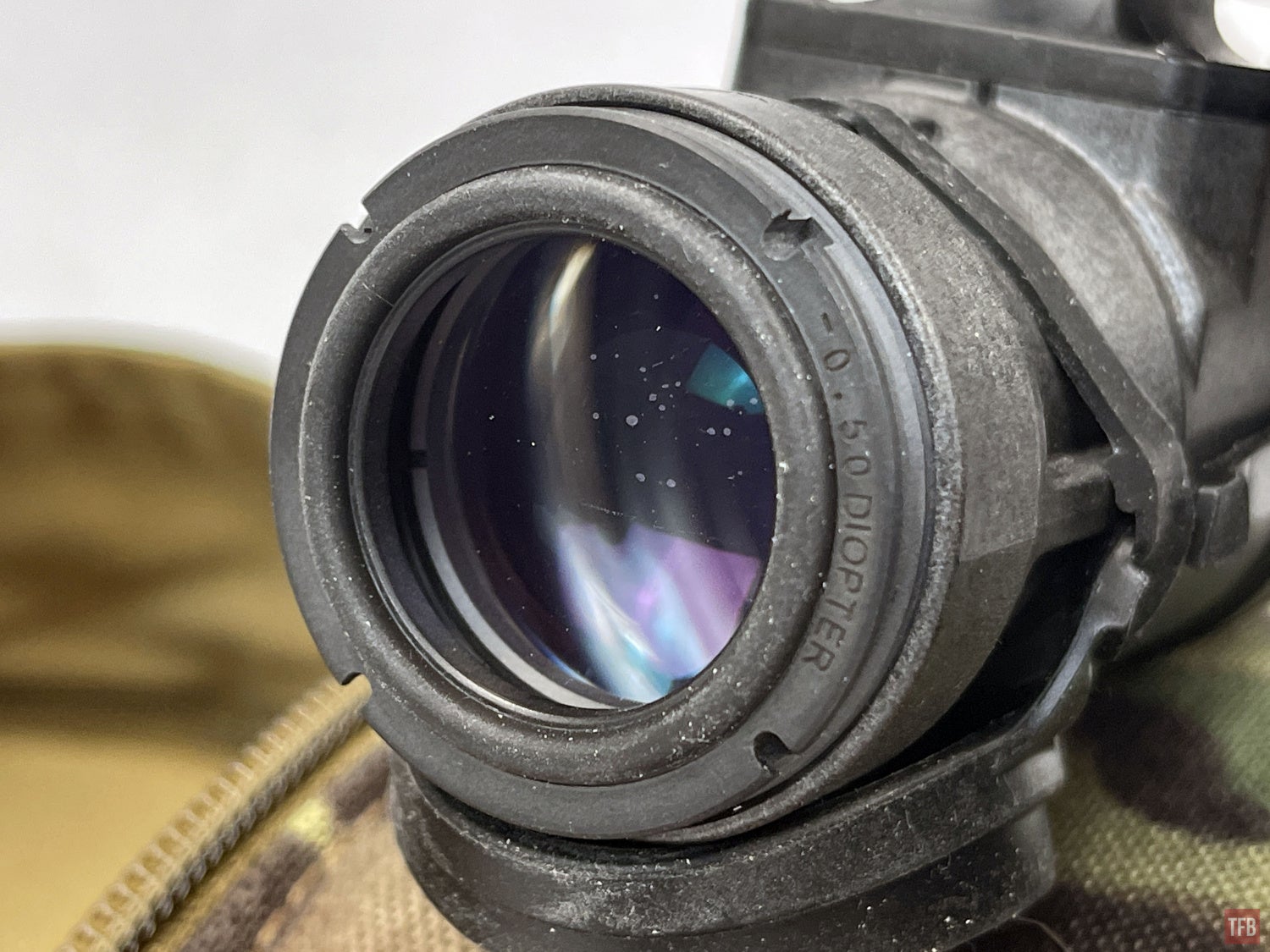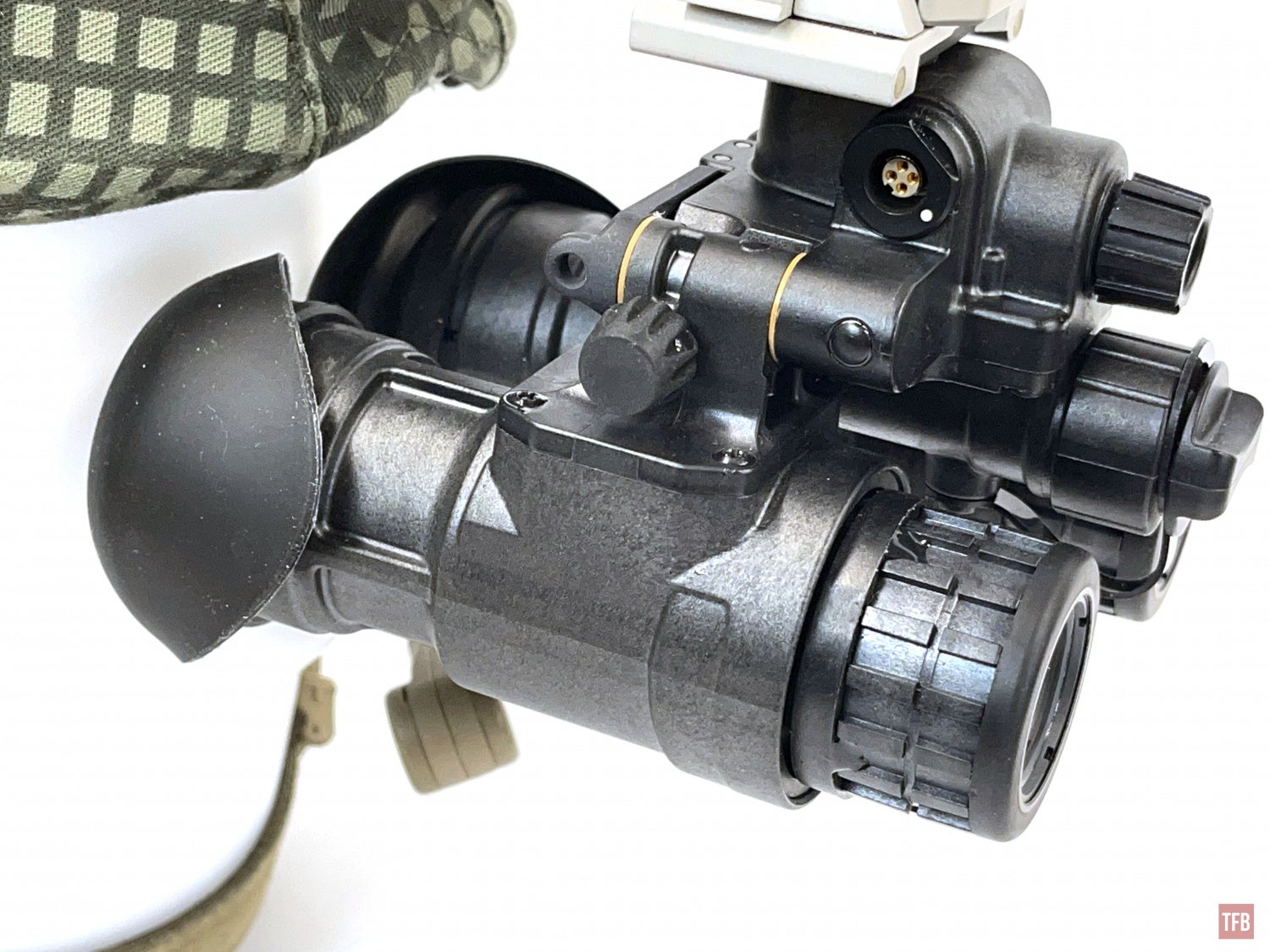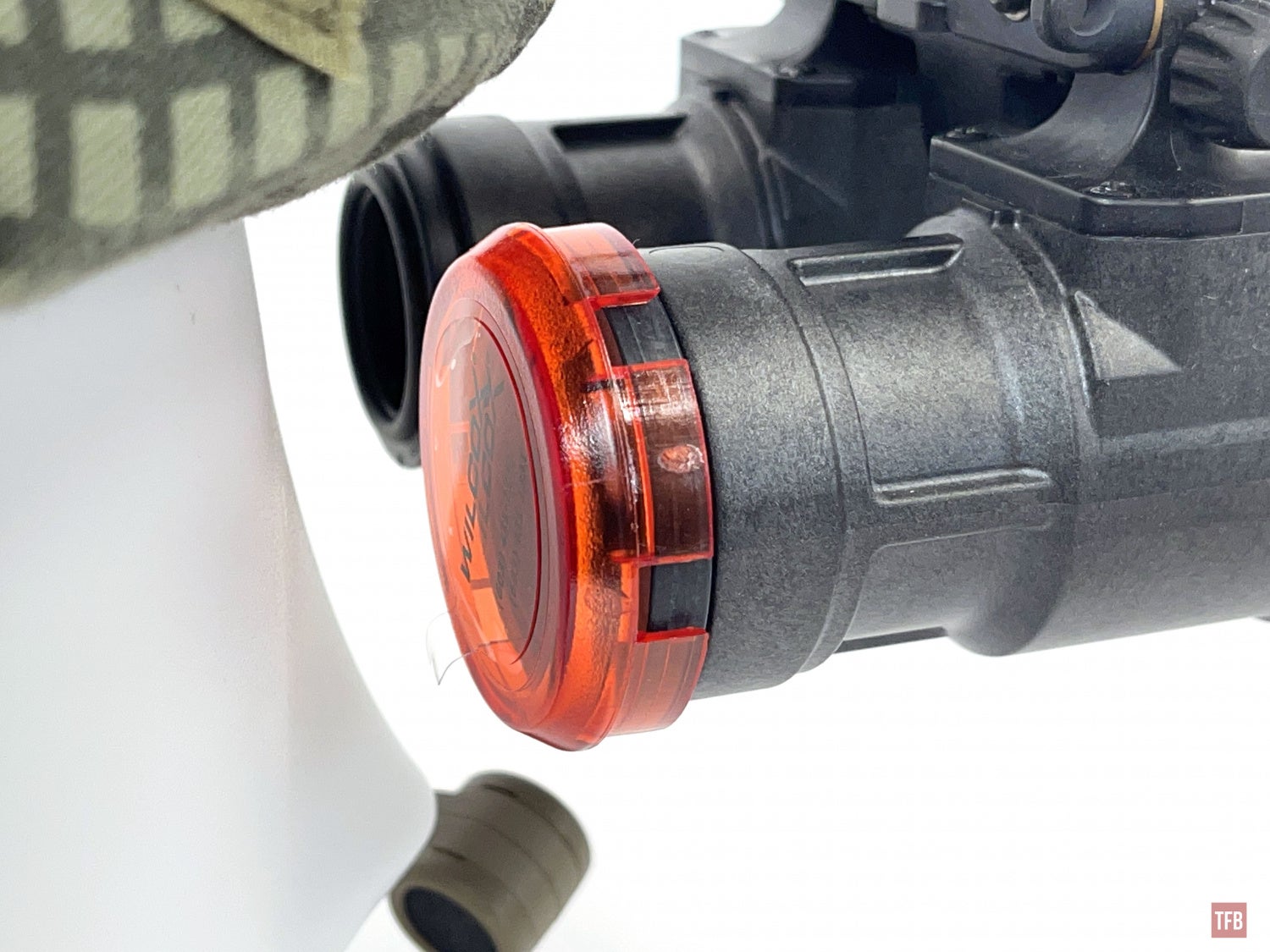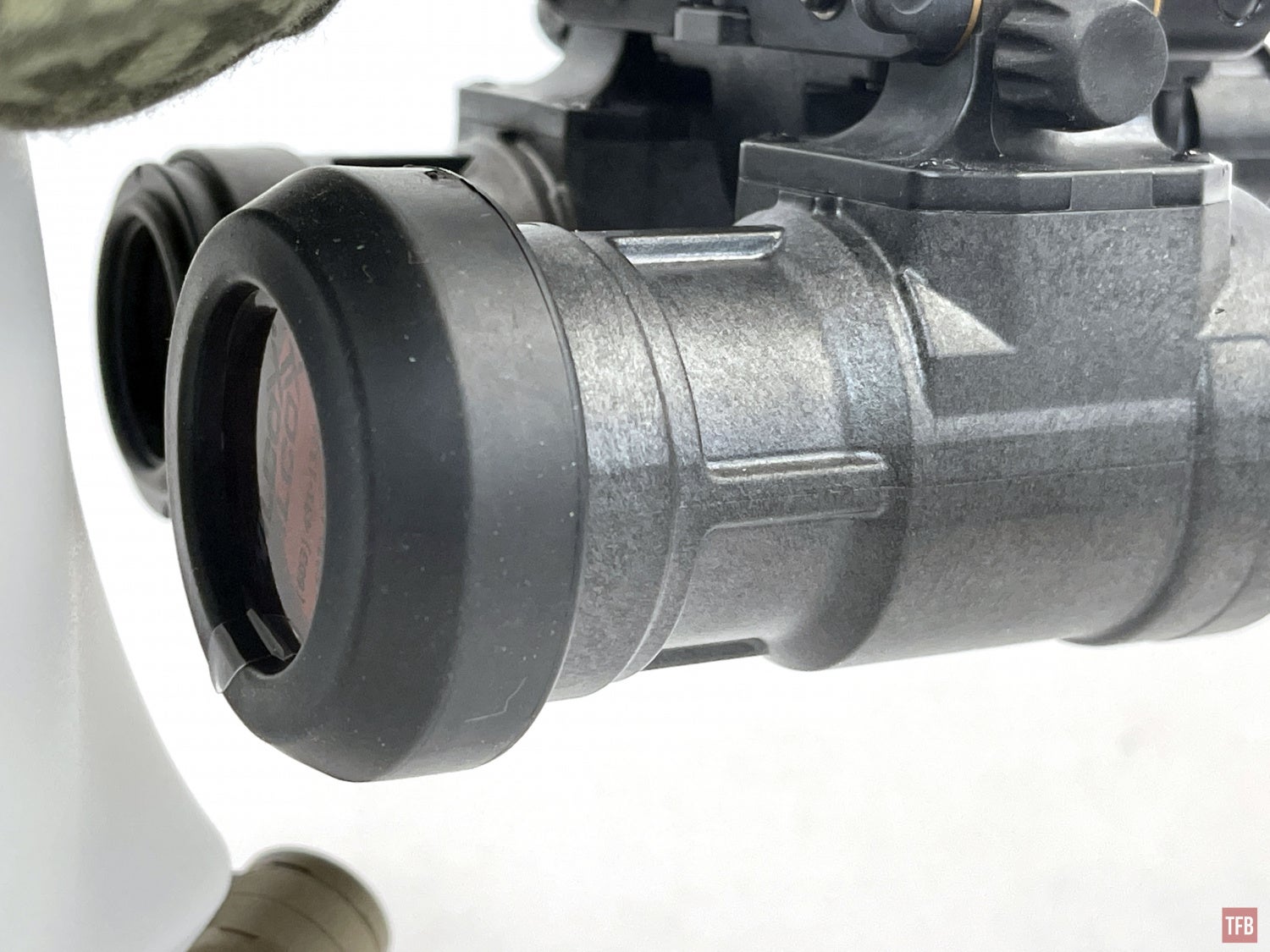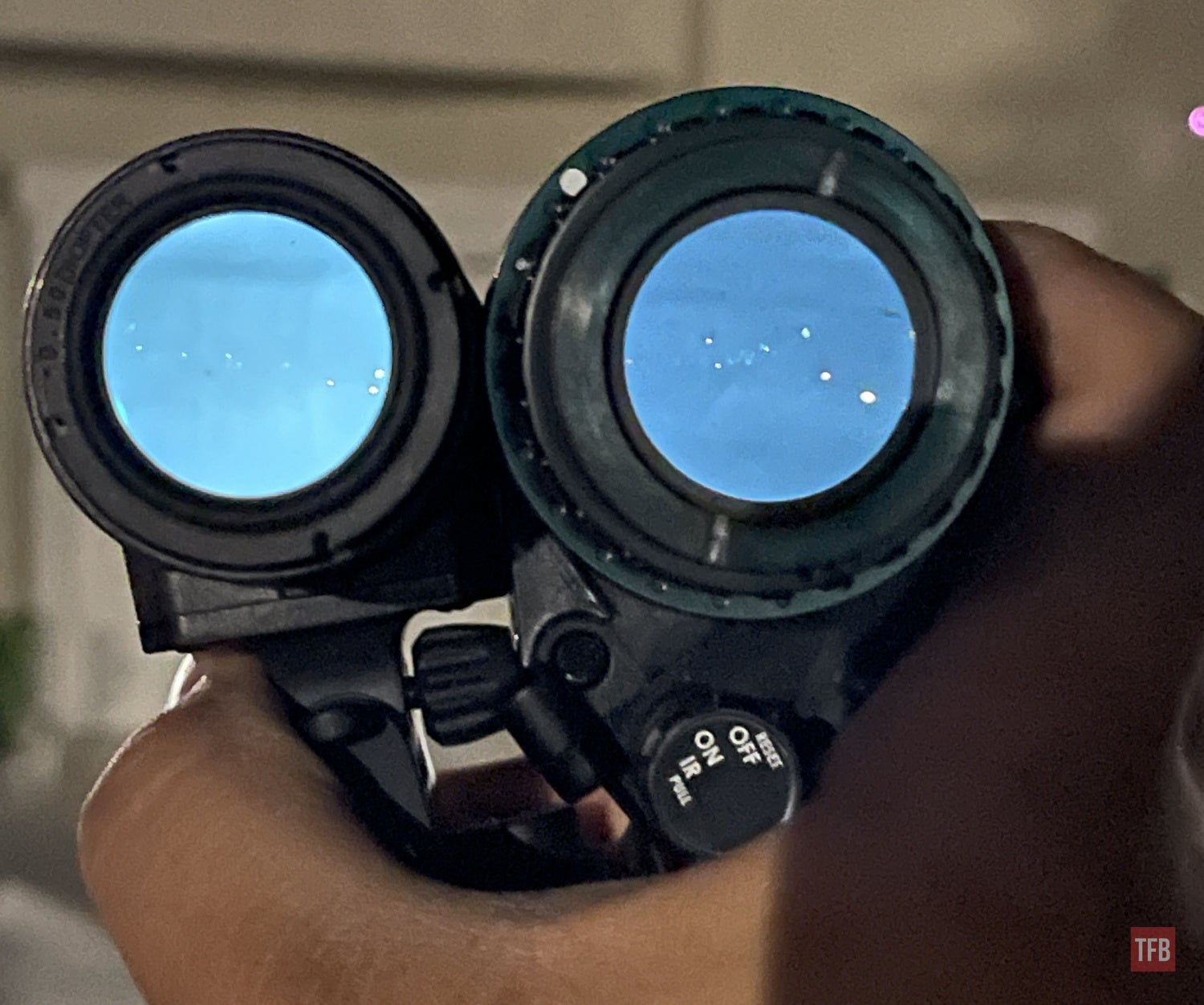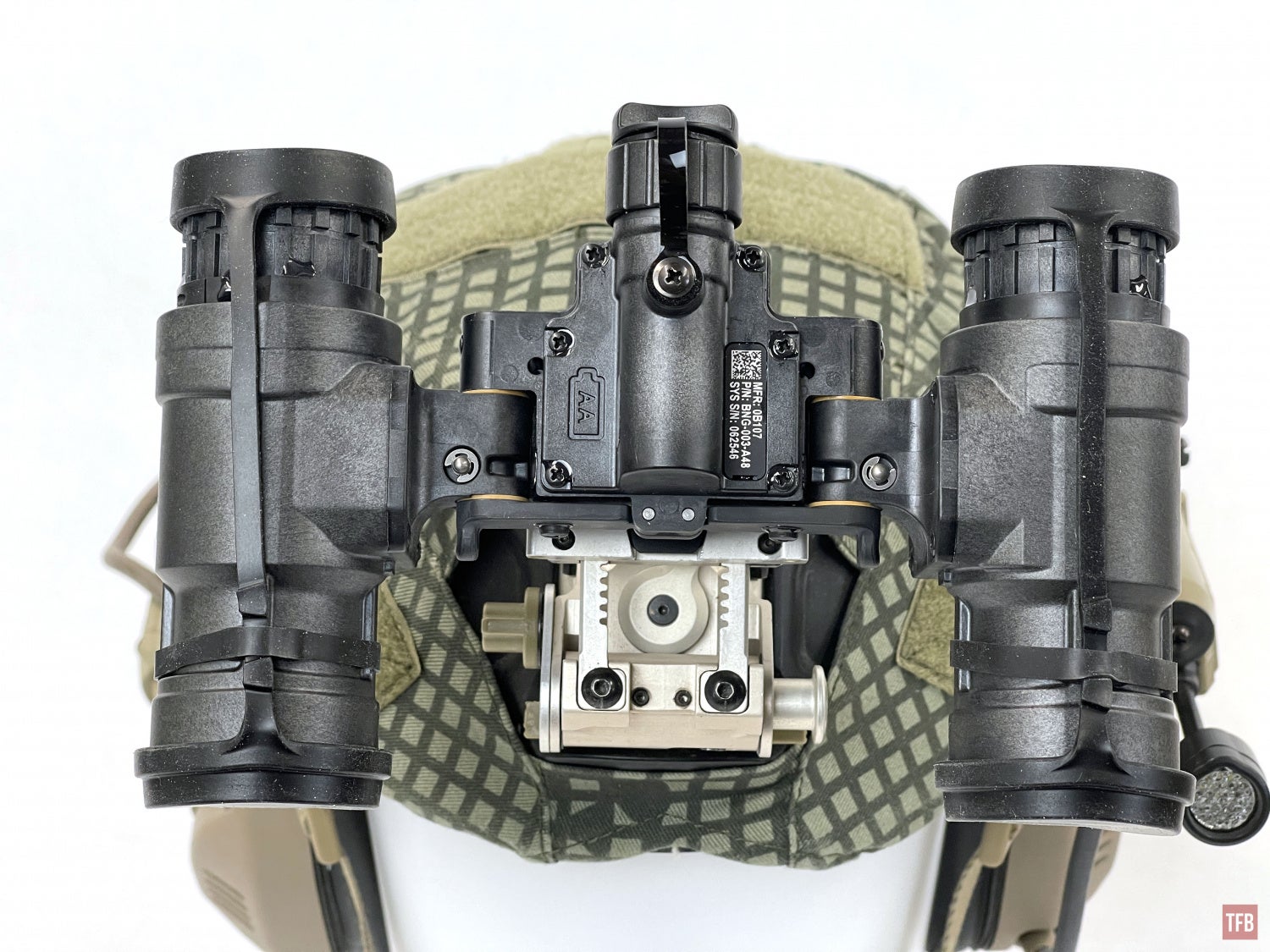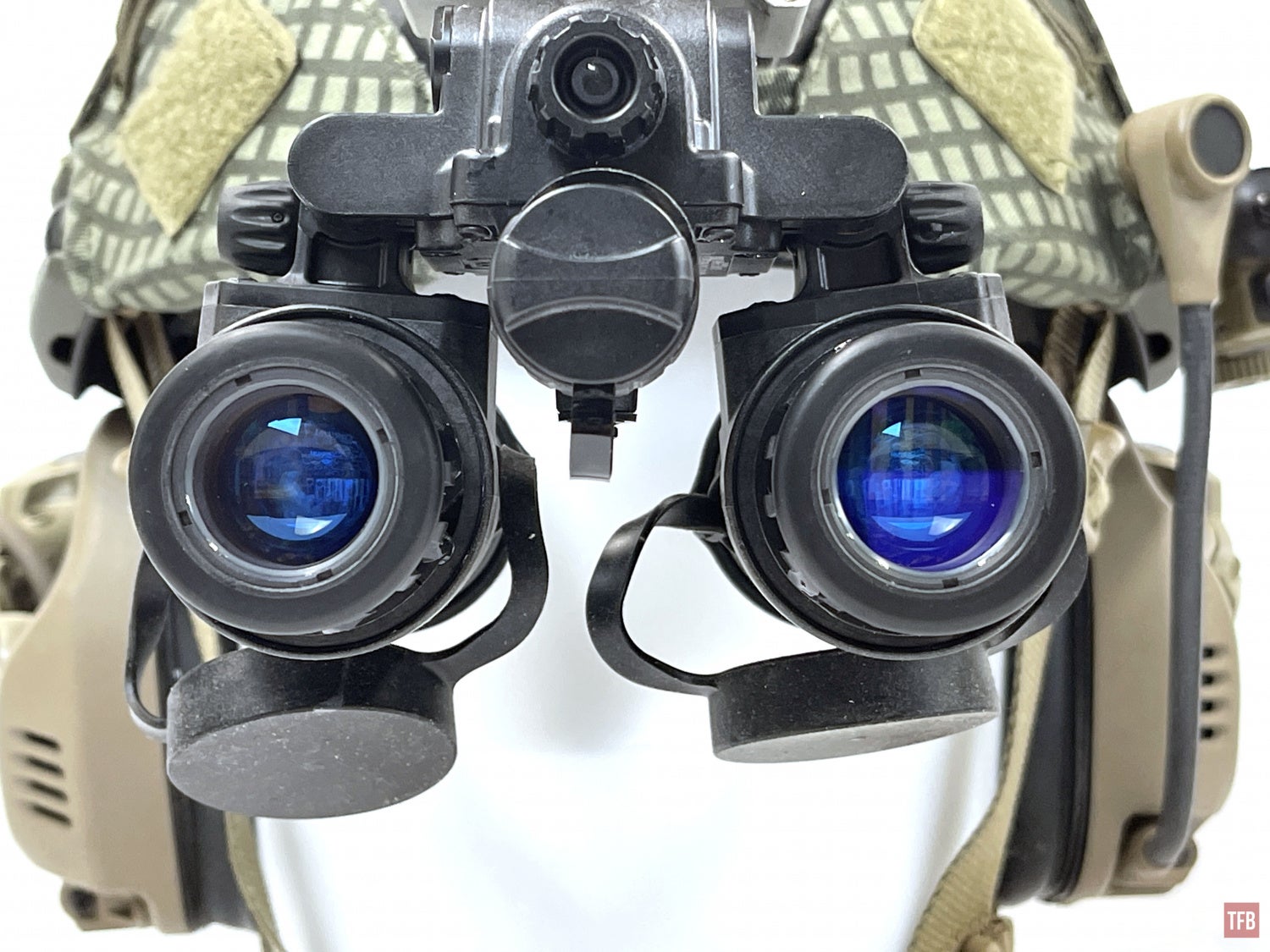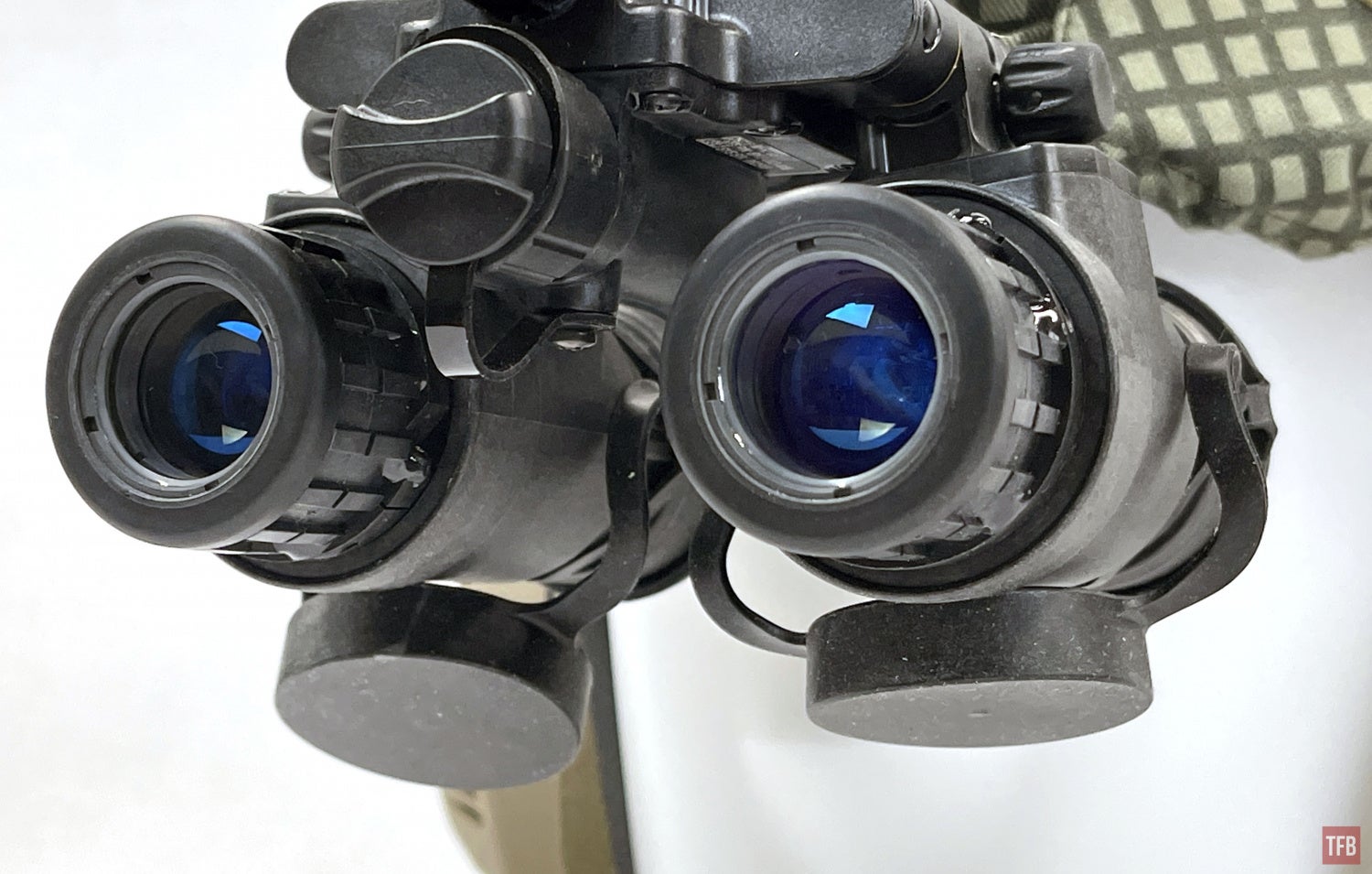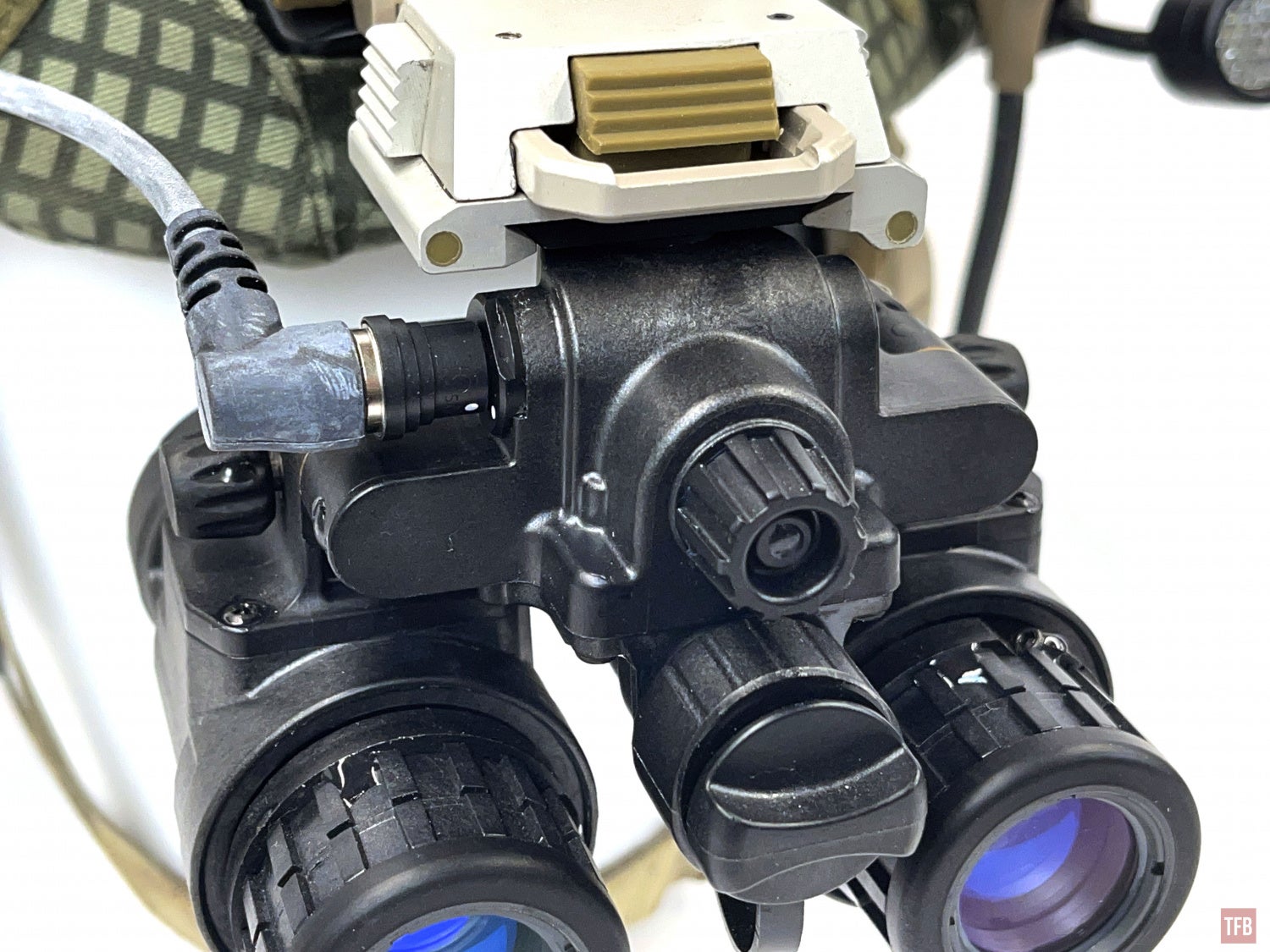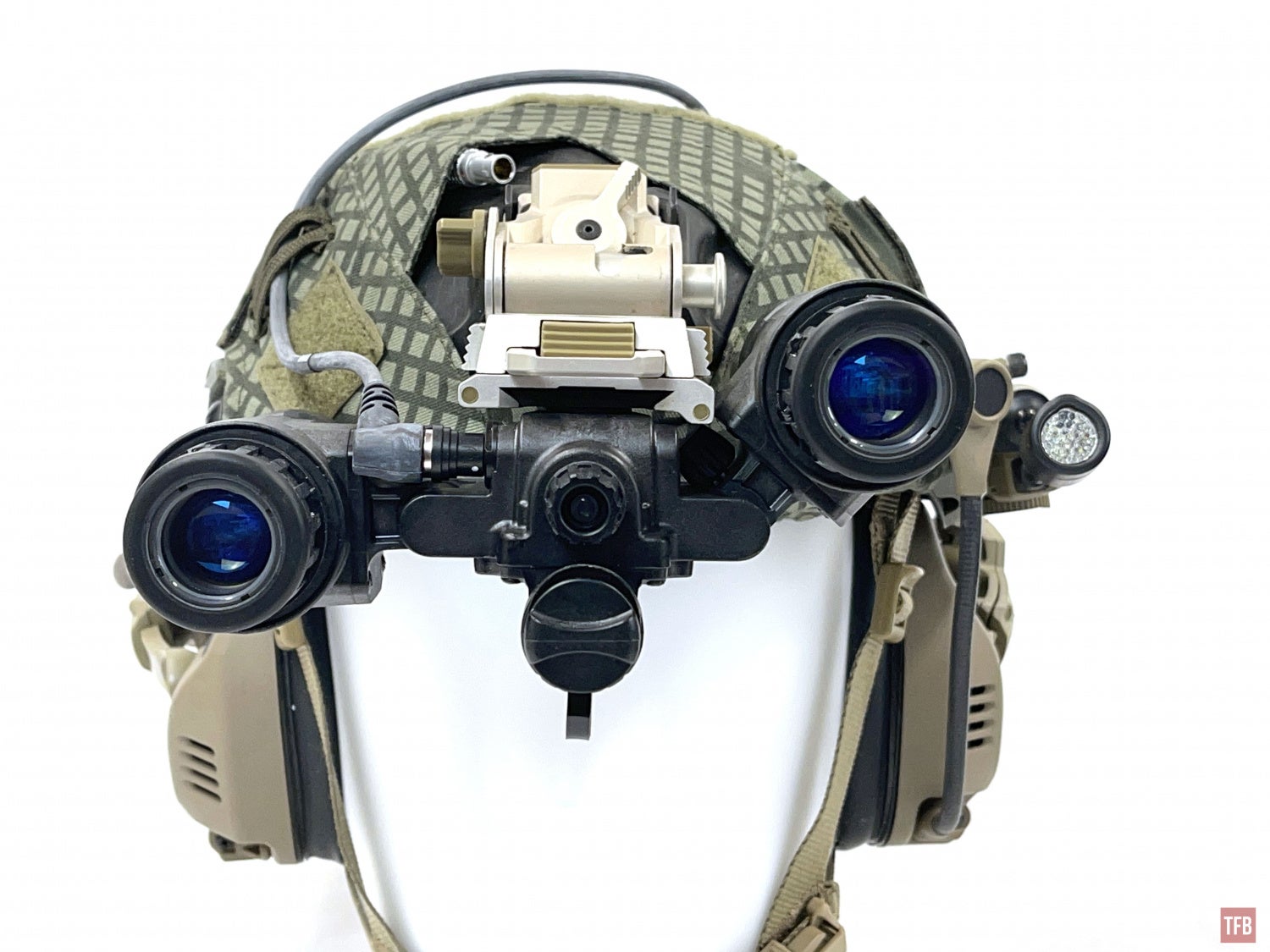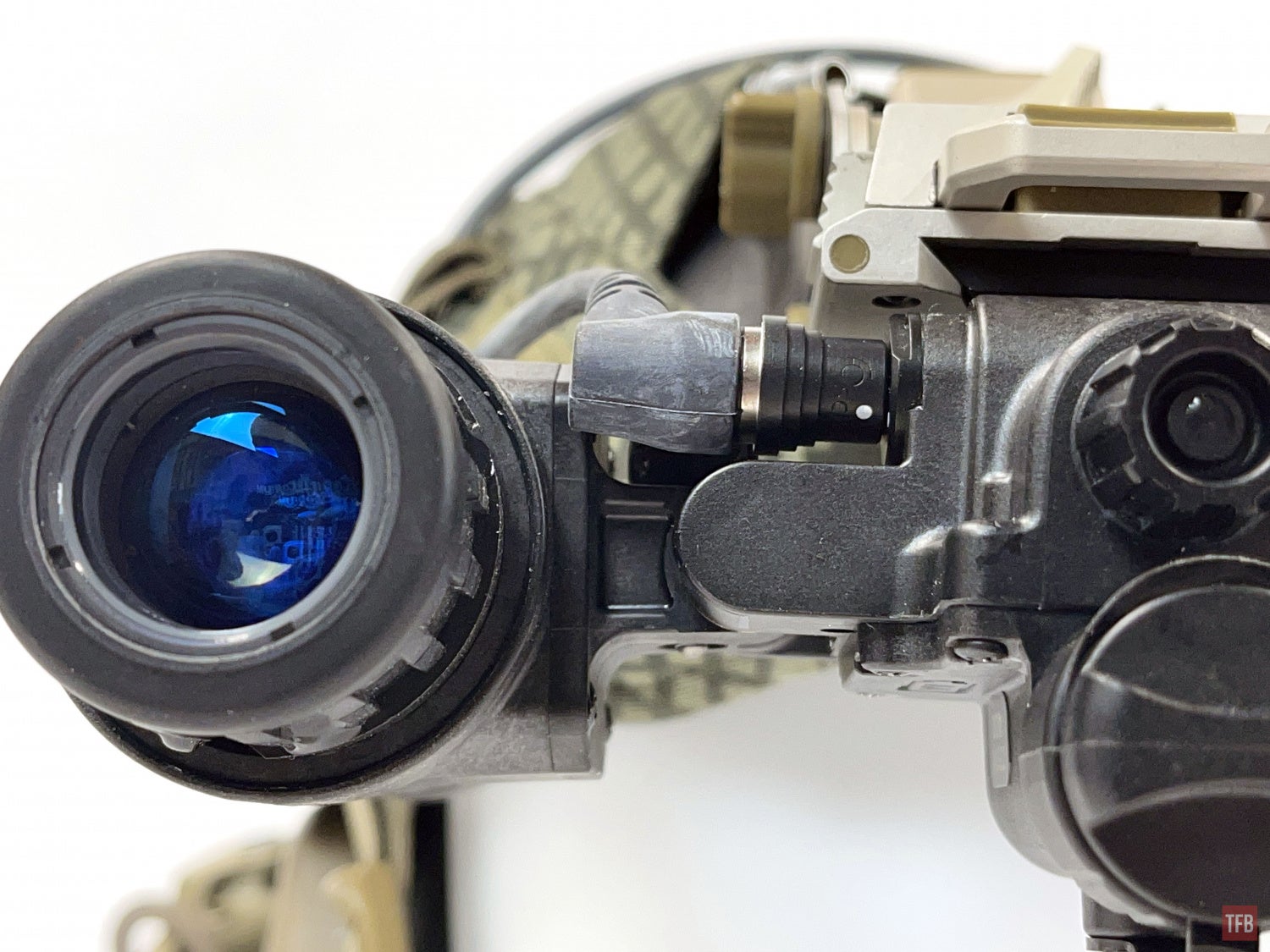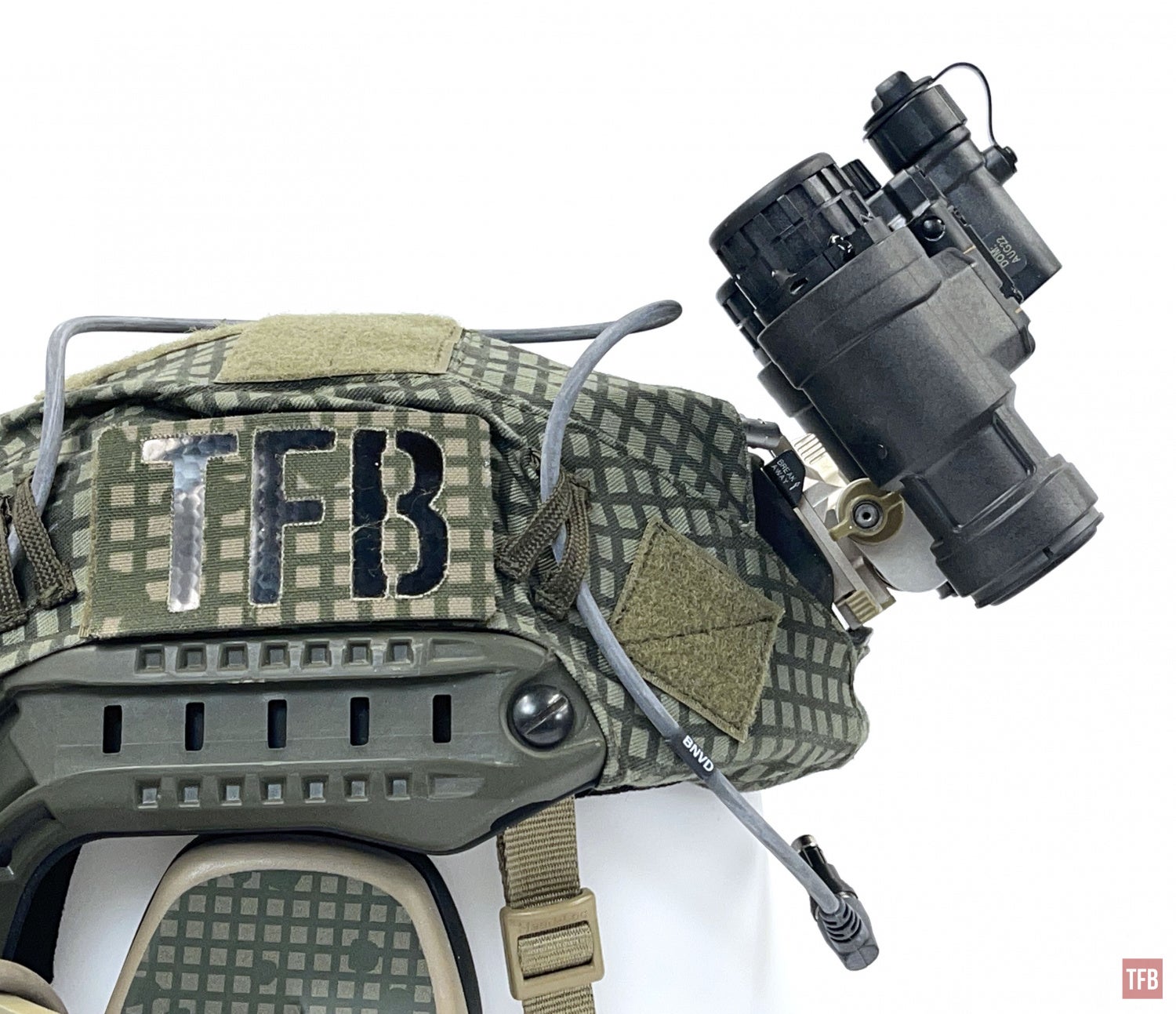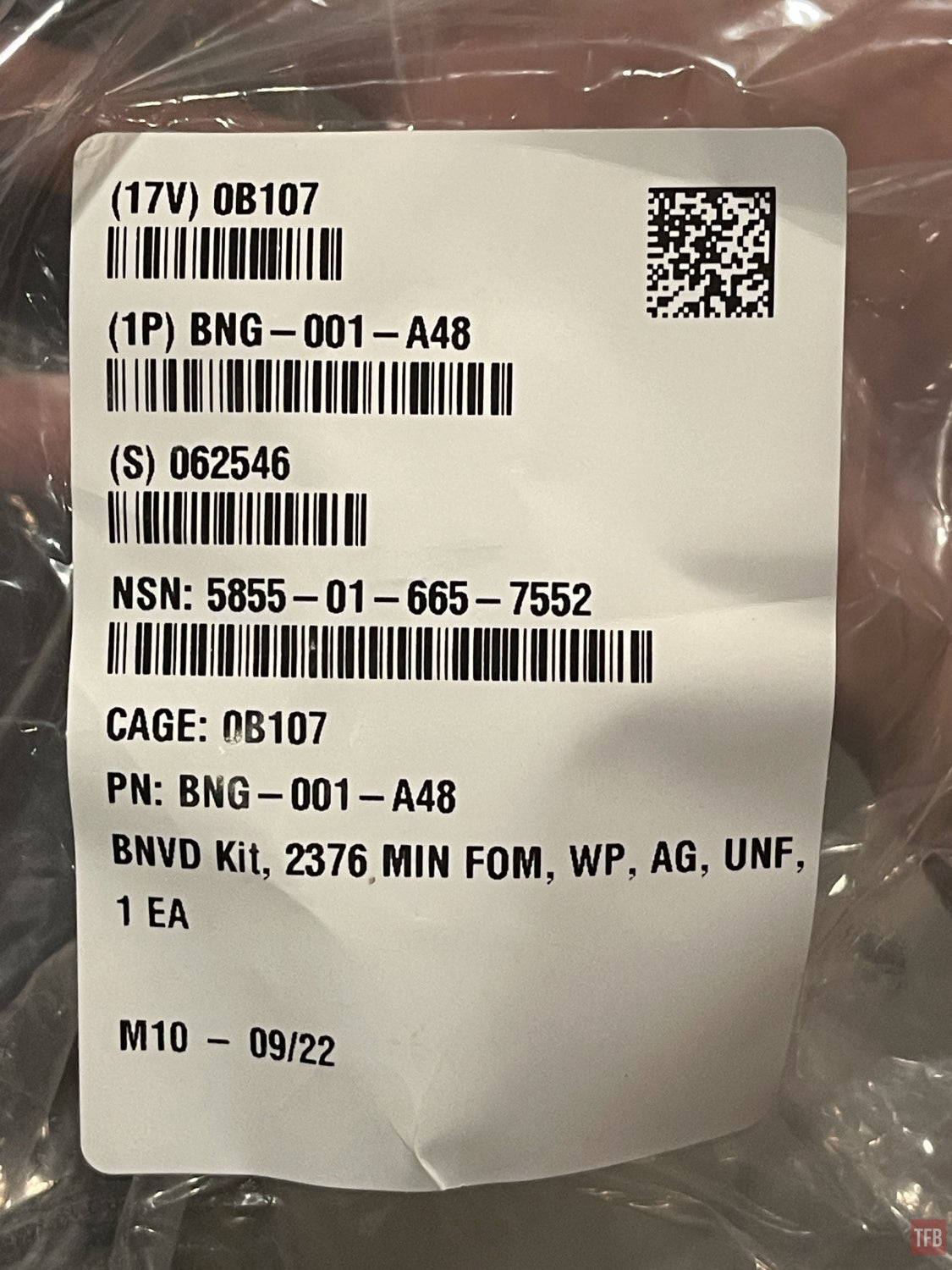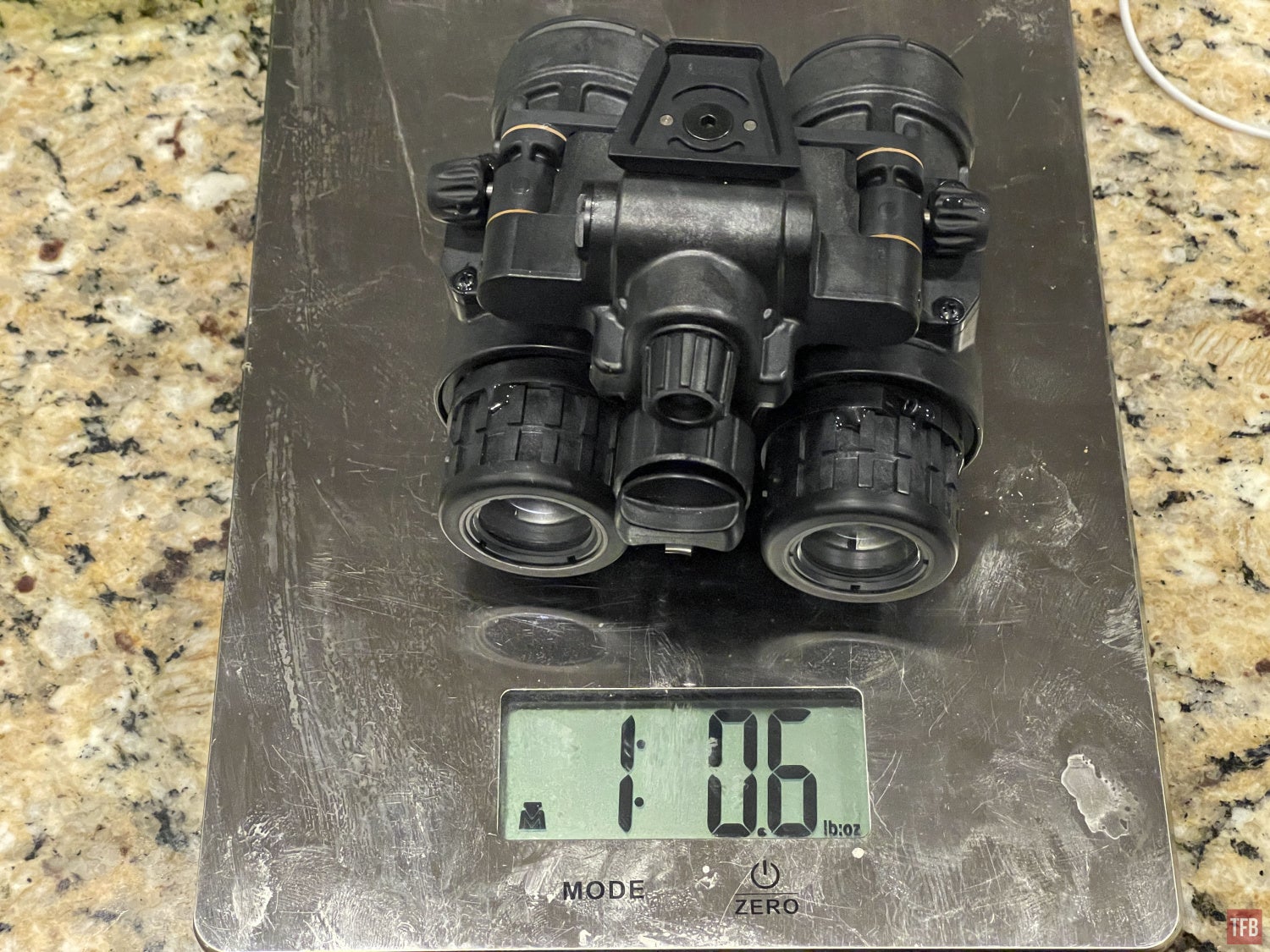Hello again nocturnal enthusiasts. Did last week’s Friday Night Lights article about Rifle Dynamic’s Red Oktober Kalashnikov Championship After Dark get you intrigued to want to shoot AKs in the dark? I hope so. It is a lot of fun. Well, today we take a look at arguably the best dual tube night vision goggle – the L3Harris BNVD PVS-31A.
Dual Tube NVGs @ TFB:
- Friday Night Lights: Dual Tube Spotlight – EOTech BinoNV-C
- Friday Night Lights: Dual Tube Spotlight – Elbit F5032 SBNVG/PVS-31D
- Friday Night Lights: Dual Tube Spotlight – BNVD-1531s & DTNVS
L3Harris BNVD PVS-31A
When it comes to dual tube goggles, there is one goggle that stands out among the rest – the BNVD PVS-31A. It was limited to the military and law enforcement for a long time. On top of that, they fetch a hefty price tag with an MSRP of around $13,000. I have looked through a handful of PVS-31As in the past but only spent several minutes behind them. Recently, I managed to borrow a set and really take a close look at a pair.
There have been a couple of night vision goggles that mimic the aesthetics of the PVS-31A. The ATN PS-31 looks like the PVS-31A but it has some parts that are made of metal and an adjustable rear diopter for the eyepieces. To refresh your memory, read that article here. The PS31 was not a very good housing. It had odd design choices and everything about it was proprietary other than the use of standard 10160 tubes. It did not have manual gain whereas the PVS-31A does but more about that later. The other goggle that was designed like a PVS-31A is the Argus BNVD-1431. The bridge is a near identical copy of the L3Harris design. Even the molding lines appear to be in the same position. It uses PVS-14 optics for easier building and repair. This also reduces the price quite a bit for a built unit. The new 1431 MKII has a manual gain ability which makes it closer in function to a PVS-31A. But now let’s dive deeper into the L3Harris PVS-31A.
The monocular pods can articulate past 90º.
There are knobs on each articulating arm that are for pupillary distance (PD) stops. You turn the knob to move a screw that will hit the side of the battery compartment and act as a PD stop.
Behind the PD adjustment knobs, there are lanyard loops. This is for attaching a neck lanyard. You can hook the bungees on your helmet onto them or you can use it to tether the PVS-31A to your helmet in case your mount fails.
PVS-31A Lenses
The PVS-31A has proprietary lenses. The objective lenses do not have any threads for sacrificial lenses. So the only way to add them is to make a slip-on cover like a Butler Creek flip cap.
The objective lenses have a unique lens flare that they create. Here is a video showing it.
The rear eyepieces do not have adjustable diopters. Instead, they have screw-in diopters at set levels. The standard issue BNVD PVS-31A comes with -0.5 diopters. Below I removed the right one so you can see what the actual eyepiece looks like without the diopter.
The diopter also doubles as the eyecup retaining ring for the PVS-31A.
If you use Wilcox amber filters, there is an adapter ring that snaps onto the eye cup retaining ring of the diopter.
Now you can snap on the amber filter that that adapter ring.
Here is the Wilcox amber filter with the rubber cover.
There is a huge benefit to the PVS-31A ocular design. Since it does not have an adjustable diopter, there is less bulk compared to a PVS-14 ocular. Take a look at the photo below. Ignore the thickness of the PVS-14 eyecup ring. Instead, you can see another ring just outside of that.
When you wear the PVS-31A, the outer ring that encompasses the lens of the eyepiece is very thin. It makes it very easy for your peripheral vision to see around the housing. While you can still see around PVS-14 style eyepieces, the larger ring does obscure some of your peripheral vision.
PVS-31A Bikini Covers
The PVS-31A comes with bikini covers. However, they are only retained at the rear of the monocular pod.
The bikini cover has protrusions that interface with the black band that wraps around the monocular pod to hold the cover on when you flip the covers off. The protrusions help to keep the black band from sliding forwards or backward.
Usually, bikini covers for night vision devices use two bands – one in front and one in back to hold the cover in place. However, there is not much room for a second band behind the objective lens.
How you install the bikini covers will affect how the front cover dangles. See the image below.
In order to fix this, remove the low-hanging bikini cover, flip it over 180º and reinstall it again on the monocular pod.
Now the front cover stays closer to the monocular pod body.
Cold Weather Battery Pack
The PVS-31A is powered by a single AA battery. You need to use a lithium AA battery and you can get up to 12 hours of run time. If you try to use an alkaline AA you will only get over an hour of run time. That is one of the issues I have with this system. I do not understand why they would design it to do this. PVS-14s can run off an alkaline AA for a solid 40 hours. Some binos like the Elbit binos allegedly run for 20+ hours on a AA battery.
To increase run time on the PVS-31A, L3Harris provides their Cold Weather Battery Pack. It houses four AA batteries (lithium) and has IR lights built into it for IFF purposes. It uses a Fischer connection and has a cable to route power to the goggle.
There is a minor issue with running the power cable. It interferes with the articulation of the right monocular pod. The pod can rotate 90º but it cannot go any further due to the cable. See the picture below.
When the goggle is flipped up on the mount, the right pod cannot move closer to the helmet and sticks out further.
In comparison, here is how far the right pod can move when the power cable is not plugged into the port.
With the battery pack, the PVS-31A now has a run time of more than 48 hours.
Accessories
L3Harris ships the PVS-31A sealed in a plastic bag. There are no spec sheets with them. Some vendors can get spec sheets with their units but typically they do not have them. These are contract-issue goggles and meet a minimum performance requirement. Minimum FOM for the tubes is 2376 and they are white phosphor.
The goggle comes in a large pouch. There is a small pocket on top of the lid that houses the battery pack. The rest of the accessories fit inside the large pouch.
Final Thoughts On The L3Harris PVS-31A
There is something about the 31A that makes people desire to own a pair. Part of it is that for a long time they were not sold to civilians. TNVC changed that a couple years ago so now if you can afford them, you can buy them. They are one of the lightest goggles around that use 18mm tubes. The manual says they are less than 500g with the battery.
This is still pretty lightweight for a dual-tube goggle and it has manual gain. In order to turn them on, you press the knob above the battery cap inward and hold it down until the goggles turn on. Repeat to turn them off. Rotate the knob to adjust the gain. There are some goggles that are lighter like the Nocturn Katana, especially if you use RPO lenses they are 15.4oz with a CR123. Unlike the Katana, the PVS-31A pods do not shut off when you roll the pods out. They can turn off when you flip the whole goggle up past vertical.
One problem with the PVS-31A is their proprietary nature. Also, the articulating arms are somewhat fragile. I have seen some pictures of broken PVS-31As and the arm is what always breaks. It can take some time to get them repaired by the manufacturer, bust recently TNVC announced they are now offering in-house repairs and extended warranty to goggles sold by them and through their dealers. Now you can get your goggles repaired much faster if there are any issues.
Thanks to my friend Josh for letting me check these out.


